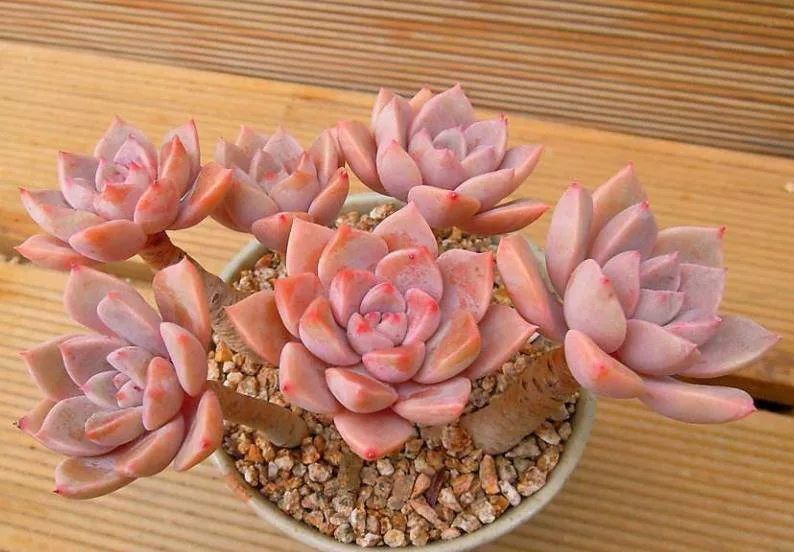Succulents are a diverse and intriguing group of plants that have captivated gardeners, interior decorators, and plant enthusiasts alike. These unique plants are known for their ability to thrive in arid and harsh conditions.
Defining Succulents
Succulents are a category of plants characterized by their ability to store water in specialized tissues, such as their leaves, stems, or roots. This water storage capacity allows succulents to withstand extended periods of drought, making them well-suited to arid environments. The term “succulent” itself is derived from the Latin word “succus,” which means juice or sap, emphasizing the importance of their water-storing adaptations.
Succulent Classification
The world of succulents is vast and diverse, with thousands of species that belong to various plant families. Succulents are not limited to a single botanical family; rather, they are found in several, including the Cactaceae (cactus family), Crassulaceae (stonecrop family), and Agavaceae (agave family). Each family has its own unique characteristics and growth habits, making succulents a diverse and captivating group of plants.
Unique Succulent Characteristics
Succulents display a set of remarkable traits that set them apart from other plant types. Some of these features include fleshy, thick leaves or stems that store water, which gives succulents their distinctive appearance. These adaptations serve as a means of survival in harsh, water-scarce environments, where they can store water during periods of abundance and use it when resources are scarce.
Geographic Distribution
Succulents can be found in a variety of regions worldwide, from deserts and arid grasslands to rocky cliffs and coastal zones. Some succulents have adapted to extreme conditions, thriving in places with scorching temperatures, minimal rainfall, and intense sunlight. Examples of succulent hotspots include the deserts of the American Southwest, the African savannas, and the mountainous regions of South America.
Succulent Varieties
The variety of succulent species is staggering, encompassing numerous shapes, sizes, and colors. Cacti, a well-known subset of succulents, are known for their spiny or thorny appearance. Other popular succulents include Echeverias, known for their rosette shapes, and Aloe, which has medicinal properties and striking foliage. Whether you prefer the spiky elegance of cacti or the delicate beauty of echeverias, there is a succulent to suit every taste.
Benefits of Succulents
Succulents offer several benefits that make them appealing to both novice and experienced gardeners. They are low-maintenance, making them an excellent choice for those with busy schedules. Additionally, succulents are adept at purifying the air, improving indoor air quality, and adding aesthetic appeal to homes and gardens. Their adaptability and hardiness make them an ideal choice for those looking to introduce more greenery into their surroundings.
Cultivating Succulents
Cultivating succulents successfully involves understanding their specific care requirements. Most succulents thrive in well-draining soil that prevents waterlogged roots. It’s crucial to provide them with bright, indirect sunlight, as too much direct sunlight can scorch their leaves. Water sparingly, allowing the soil to dry out between waterings, as overwatering is a common mistake that can lead to rot.
Succulent Reproduction
Succulents can be propagated through various methods, such as leaf or stem cuttings, offsets, and seeds. Each method has its own set of instructions and requirements. Propagation is a fascinating aspect of succulent care, allowing enthusiasts to multiply their collection and share the beauty of succulents with others.
Indoor and Outdoor Succulents
Succulents can thrive both indoors and outdoors, depending on the climate and environmental conditions. In regions with harsh winters, it is often best to cultivate succulents in pots or containers that can be brought indoors during the colder months. In more temperate areas, succulents can be planted directly in the ground, creating stunning landscapes.
Succulents in Design and Decor
The aesthetic appeal of succulents has made them popular in interior and exterior design. Succulents are used to create charming container gardens, terrariums, and xeriscapes, adding a touch of nature to urban spaces. In modern interior design, succulents are often incorporated into minimalist and Scandinavian-themed decor, providing a fresh and calming element.
Common Succulent Challenges
While succulents are known for their adaptability, they can face various challenges, including pests and diseases. Mealybugs, aphids, and scale insects are common pests that can infest succulents. Additionally, issues like overwatering, poor soil drainage, and inadequate lighting can lead to problems such as root rot and etiolation.
Conservation of Succulents
As climate change and habitat destruction threaten many natural succulent habitats, there is an increasing need for succulent conservation efforts. Several organizations and botanical gardens are actively involved in preserving succulent species in their native environments, ensuring that these unique plants continue to thrive for generations to come.
Conclusion
Succulents are a remarkable group of plants, renowned for their capacity to store water and adapt to harsh environments. Their diverse characteristics and broad geographic distribution make them a captivating subject for plant enthusiasts. Understanding the care requirements, varieties, and unique features of succulents is essential for anyone looking to incorporate these fascinating plants into their lives. Whether adorning homes, offices, or gardens, succulents offer an exceptional blend of beauty and resilience, making them a favorite among plant lovers around the world.


